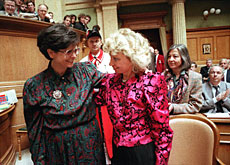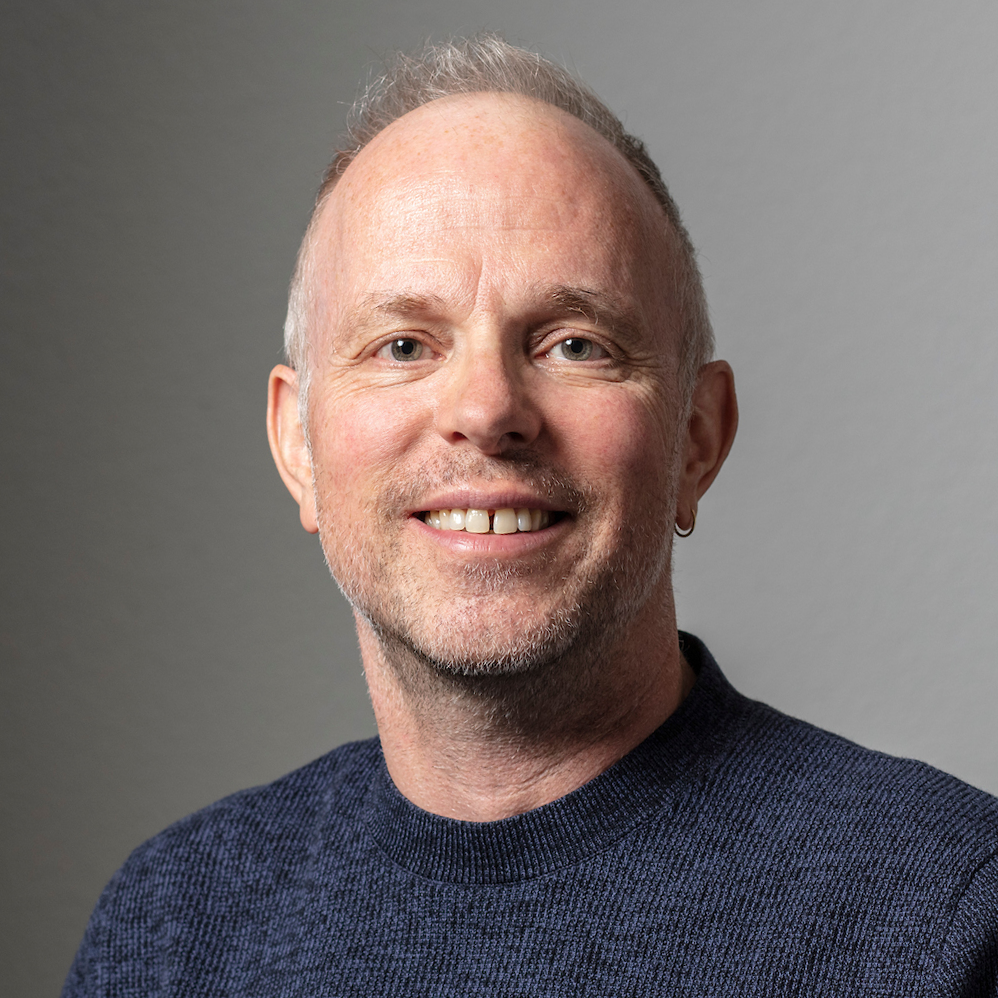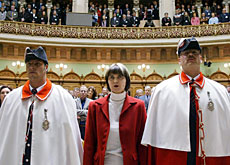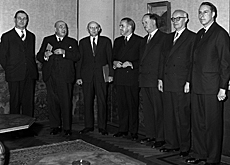Official candidates face tough time

When parliament votes in the cabinet election on December 10, there is no guarantee the parties’ official nominees will be elected.
In the past 20 years parliament has chosen Samuel Schmid, Ruth Dreifuss and Otto Stich in preference to candidates put forward by their parties.
These so-called “wild cards” made it into office, for the most part against the will of their parties, with official nominees often falling victim to scheming among the four main parties.
There is often most political intrigue when parties present just one name, providing parliament with the best chance of electing a wildcard candidate.
Illegitimate
The exception was in 2000 when parliament was looking for a successor to Adolf Ogi of the rightwing Swiss People’s Party.
It chose Samuel Schmid, the current defence minister, rather than one of the party’s two official candidates.
By the second round of voting those two nominees – Rita Fuhrer and Roland Eberle – were already out of the running as serious contenders.
Surprisingly the toughest challenge to Schmid came from another wild card, Ulrich Siegrist. But by the sixth round Schmid had garnered enough support from the centre-right Radicals and Christian Democrats to secure victory.
After the vote Schmid was dubbed the People’s Party’s “illegitimate child”. The party’s Zurich wing in particular had trouble putting its weight behind Schmid, whose powerbase is the more moderate Bern wing of the party.
Party leaders have often referred to Schmid as their “half minister” in government.
One week
The election of Ruth Dreifuss was an altogether stormier affair. The official candidate was Christiane Brunner – the current president of the centre-left Social Democratic Party.
But on election day, March 3 1993, parliamentarians chose Neuchâtel’s Francis Matthey – much to the disappointment of the Social Democrats who wanted a woman in government.
Under pressure from his party, Matthey stepped aside one week later to allow the election of the Geneva trade unionist Ruth Dreifuss.
It was the only case of an elected candidate declining to take up office in the 20th century.
First woman
One of the most memorable recent elections for many Swiss was the Social Democrat Liliane Uchtenhagen’s failed attempt at winning office in 1983.
Uchtenhagen was the party’s official candidate, but the right/centre right majority in parliament chose Otto Stich instead, much to the dismay of the Social Democrats who wanted to be the party with the first woman in government.
The centre-left party’s threat to walk out of the government was only averted after an extraordinary meeting of its delegates voted to keep both its representatives in the cabinet.
In the cabinet elections of December 1973, three official candidates went home empty handed – Arthur Schmid, Enrico Franzoni and Henri Schmitt becoming only footnotes in the pages of Swiss history.
Those who made it in their place, and whose names are still familiar in Switzerland, were the wild cards Hans Hürlimann, Georges-André Chevallez, and Willi Ritschard.
Choice
In recent years parties have tended to put forward more than one official candidate to reduce the likelihood of parliament electing a wild card.
That has also led to an increase in the number of rounds needed before a minister is chosen.
Of the seven ministers currently in office, only Kaspar Villiger, who will step down at the end of this year, was elected in the first round of voting. The other six ministers all needed several rounds to see off their challengers.
Inexperience
In the 19th century there were four cases of elected ministers declining office.
In 1855 it was the turn of Jakob Stehlin, who claimed he had neither the experience nor the training to be a minister.
In 1875 two elected candidates – one after the other – turned down office after being elected. On December 10 it was Louis Ruchonnet who said “no thank you”, and one week later his fellow parliamentarian from canton Vaud, Charles Estoppey, followed him.
But just six years later, after Karl Jakob Hofmann was elected and declined office, Ruchonnet said “yes” and remained in the government until his death in 1893.
swissinfo, Christian Raaflaub (translation: Jonathan Summerton)
The Swiss government is made up of seven ministers.
Since 1959 an informal agreement known as the “Magic Formula” has shared out the government seats among the four main parties in the same way.
The Christian Democrats, Radicals and Social Democrats each have two seats, and the People’s Party has one.
For the past 40 years under the Magic Formula, when ministers retire their successors have been chosen from the ranks of the party they represent.
Samuel Schmid was the most recent “wildcard” candidate to be elected against his party’s will.
The former interior minister, Ruth Dreifuss, only made it into office because the Social Democrats forced Francis Matthey to stand aside.
In 1983, Liliane Uchtenhagen failed in her attempt to become the first woman in government even though she was the Social Democratic Party’s official candidate.
Parties more frequently put forward two official candidates in the hope that parliament will accept one of them.

In compliance with the JTI standards
More: SWI swissinfo.ch certified by the Journalism Trust Initiative



You can find an overview of ongoing debates with our journalists here. Please join us!
If you want to start a conversation about a topic raised in this article or want to report factual errors, email us at english@swissinfo.ch.